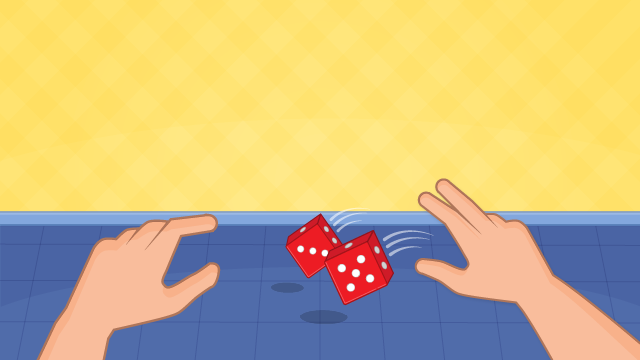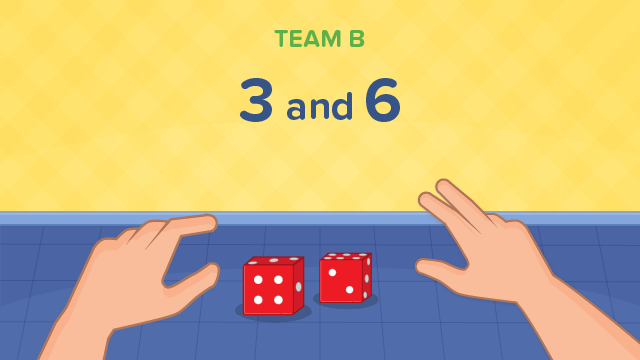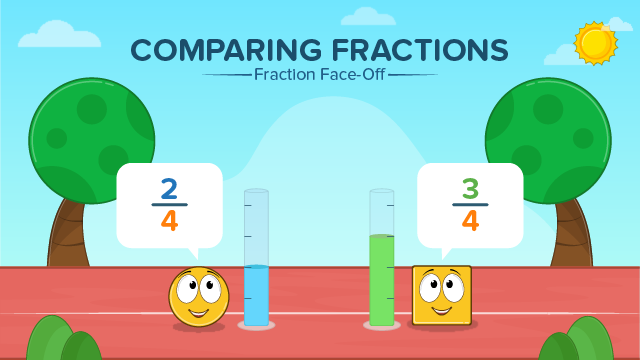
Fractions are an important part of mathematics, and comparing fractions helps us understand their relative sizes. In mathematics this guide, we will learn simple and fun ways to compare fractions at the primary level. Let’s get started!
Let’s learn how to compare fractions, which are parts of whole or equal parts. Sometimes we need to find out if one fraction is larger or smaller than another.
Here are 5 methods to compare fractions :
- Comparing Fractions with Same Denominators
- Comparing Fractions with Unlike Denominators
- Comparing Fractions with Decimal Method
- Comparing Fractions Using Visualization
- Comparing Fractions Using the Cross Multiplication Method
When fractions have the same denominators, we can compare them by looking at their numerators. The fraction with the greater numerator is larger, and the one with the smaller numerator is smaller.
For example, let’s compare 4/3 and 7/3. Since both fractions have the same denominator (3), we only need to compare their numerators.
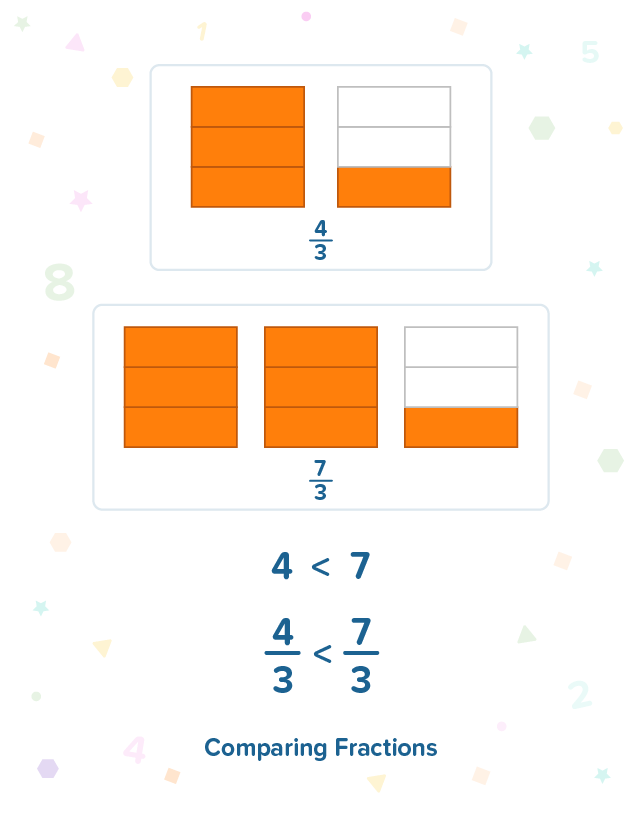
Here, 7 is greater than 4, so 7/3 is larger than 4/3.
When fractions have different denominators, we need to make them have the same denominators before comparing.
- First, we need to find a common denominator. For example, if we have 1/4 and 2/3, we can make the denominators the same by multiplying 4 and 3, which gives us 12.
- After finding the common denominator, we compare the numerators, just like before. The fraction with the bigger numerator is the larger one!
For example, let’s compare 1/4 and 2/3. We find a common multiple of 3 and 5, which is 12. We convert both fractions into equivalent fractions with a denominator of 12:
1/4 = 3/12 (multiplied numerator and denominator by 3)
2/3 = 8/12 (multiplied numerator and denominator by 4)
Now we can compare the numerators 3 and 8. Since 8 is greater than 3, 2/3 is larger than 1/4.
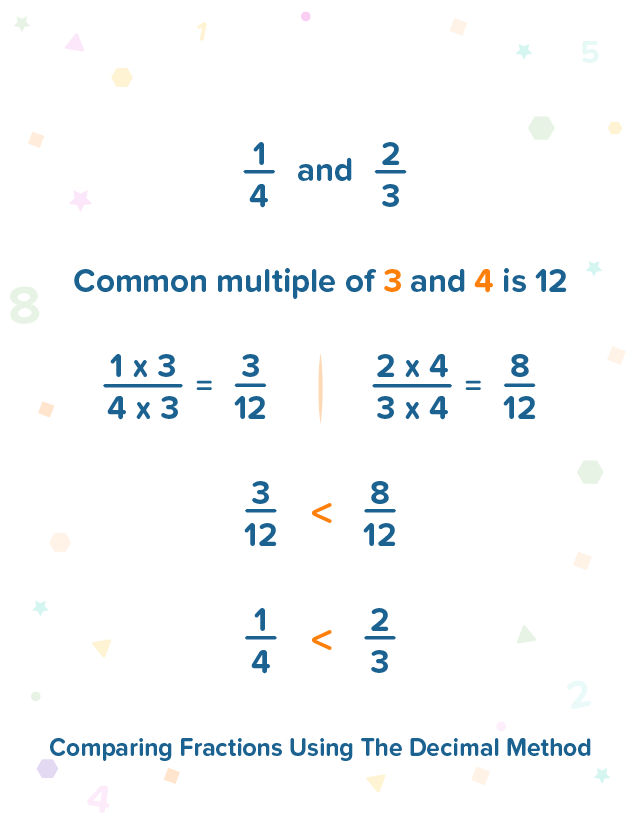
In the decimal method, we convert each fraction into a decimal by dividing the numerator by the denominator. Then we compare the decimal values.
For example, let’s compare 2/5 and 4/7. We convert them into decimals:
2/5 = 0.4 (2 divided by 5)
4/7 = 0.57 (4 divided by 7)
Now we compare the decimal values. Since 0.57 is greater than 0.4, we can say that 4/7 is larger than 2/5.
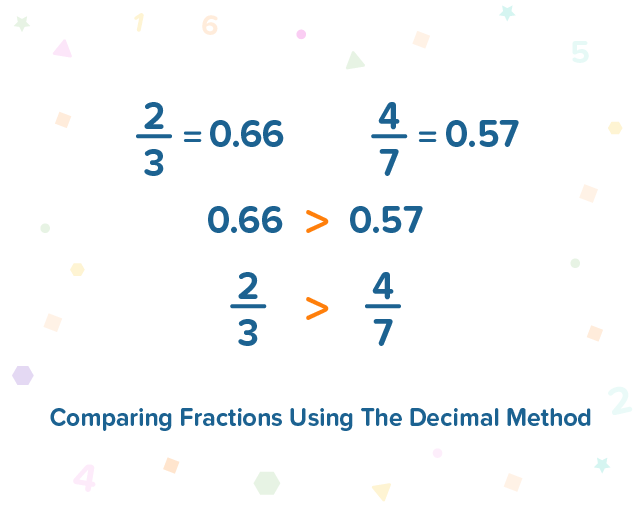
Visualizing fractions can be lots of fun and make comparisons easier. We can use shapes or objects to help us compare fractions visually.
For example, draw two circles representing fractions 1/4 and 3/4. Color the appropriate parts of each circle to represent the fractions. Here, we can clearly see that 3/4 covers more of the circle, so it is larger than 1/4.
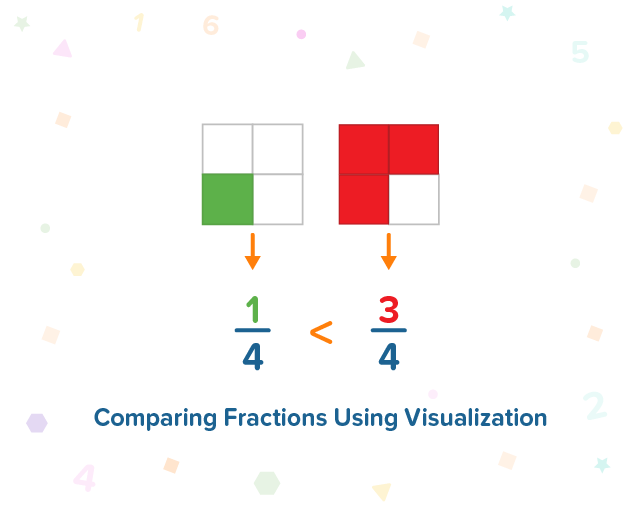
To compare fractions using cross multiplication, we multiply the numerator of one fraction with the denominator of the other fraction. Let’s understand this with an example:
Example: Compare 3/5 and 4/3.
Step 1 : Multiply the numerator of the first fraction (3) with the denominator of the second fraction (3).
3 × 3 = 9
Step 2 : Multiply the numerator of the second fraction (4) with the denominator of the first fraction (5).
4 × 5 = 20
Step 3 : Compare the results from Step 1 and Step 2. If the product of the first fraction is smaller, then the first fraction is smaller. If the product of the first fraction is greater, then the first fraction is larger.
In this example, 9 is smaller than 20. Therefore, 3/5 is smaller than 4/3.
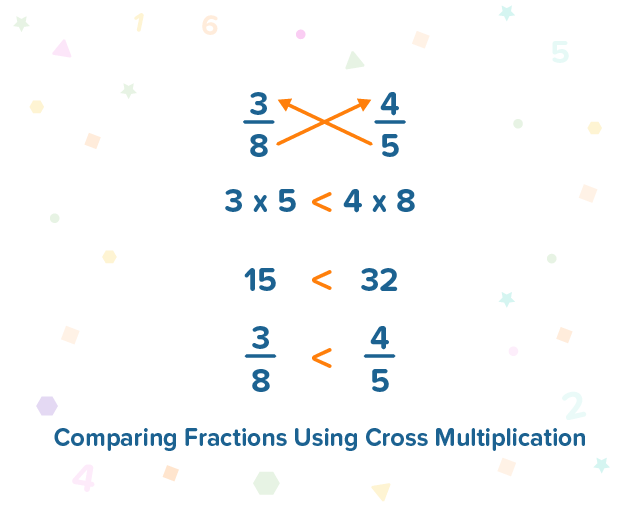
To make comparing even more fun, parents or teachers can use pictures or tools to help kids understand and practice comparing fractions. Fraction strips or number lines can also be used to visualize fractions and their comparison.
Remember:
The larger the numerator, the larger the fraction.
The smaller the denominator, the larger the fraction.
Regular practise and reinforcement will help kids develop a strong foundation comparing fractions and lay the groundwork for more advanced concepts in the future.
Teaching comparing fractions with kid-friendly, clear, and easy-to-understand posters from Uncle Math School by Fun2Do Labs :
Learning comparing fractions can be made enjoyable by incorporating interactive games and activities.
Fraction Activity :
This is a fun-filled activity for kids to work in pairs. This can prove useful for teaching comparing fractions. This activity can be performed in the following steps :
- Divide kids into 2 teams. Each team gets a turn to roll the dice.
- Instruct teams to roll both dice and look at the numbers rolled. Take a smaller number as the numerator and a larger number as the denominator of the fraction.
- Now comes the exciting part! Both teams compare their fractions to determine which one is larger.
- The team with the larger fraction wins the round and earns a point for their team.
